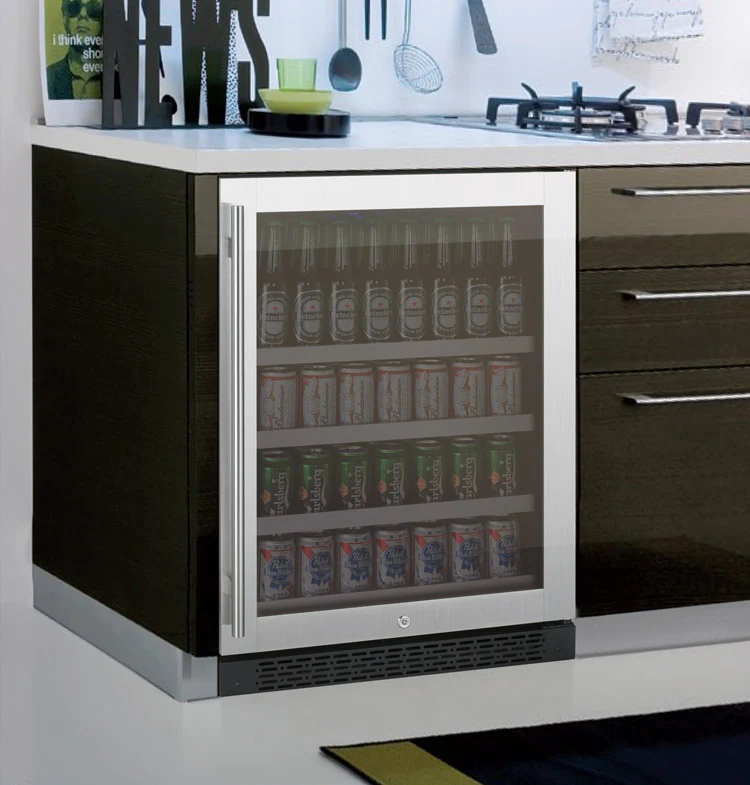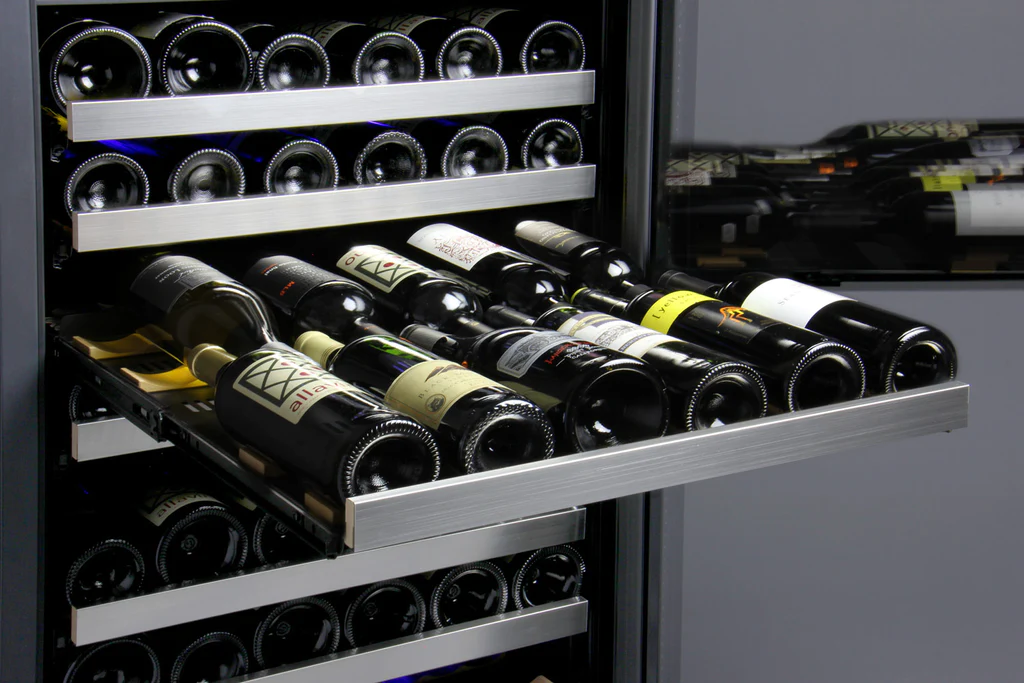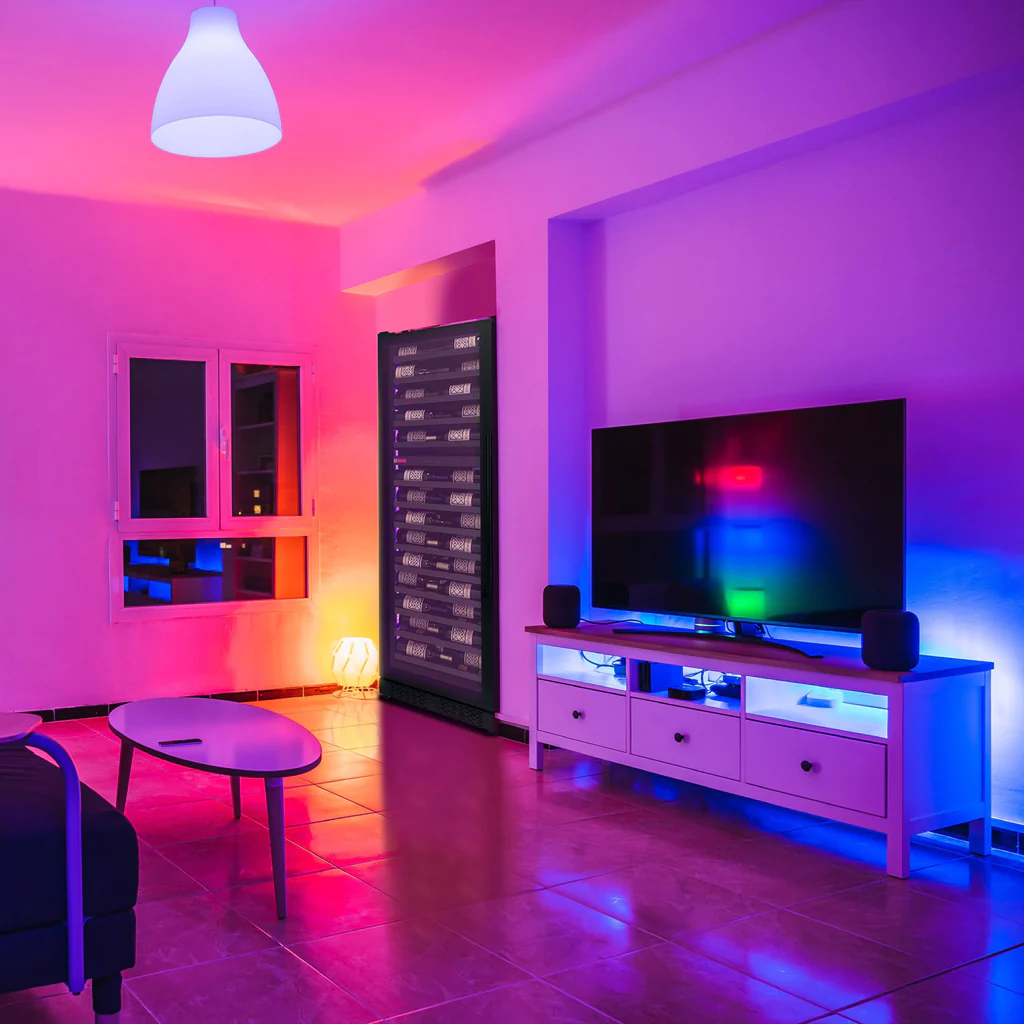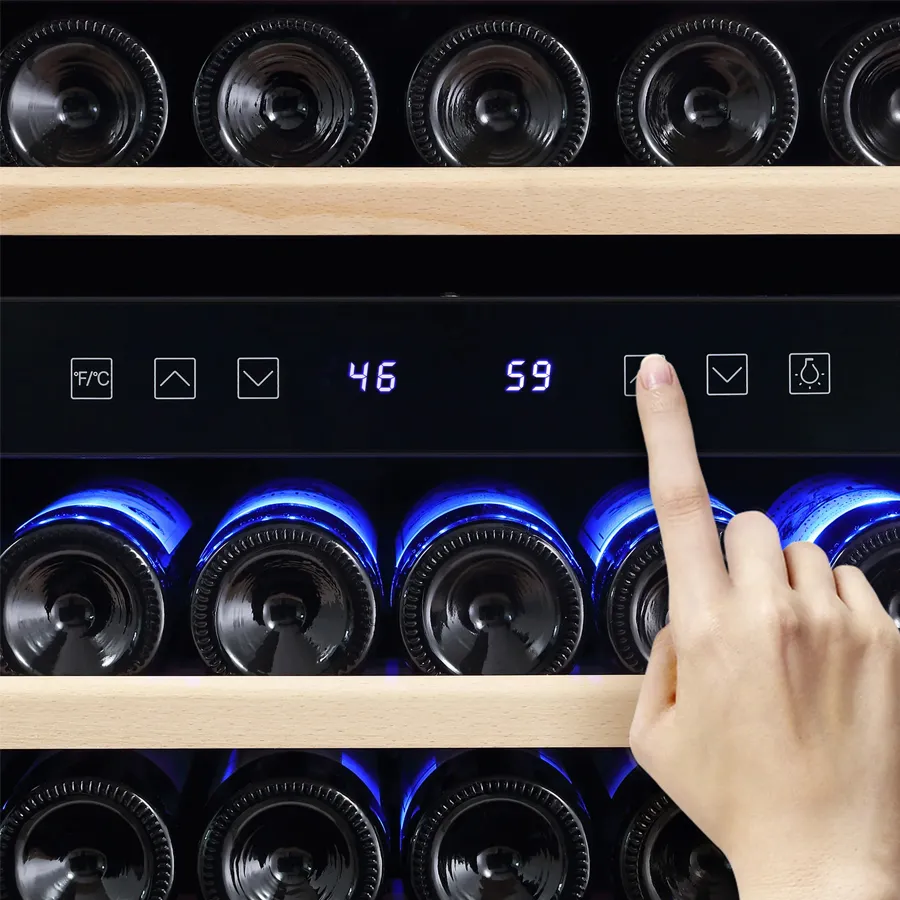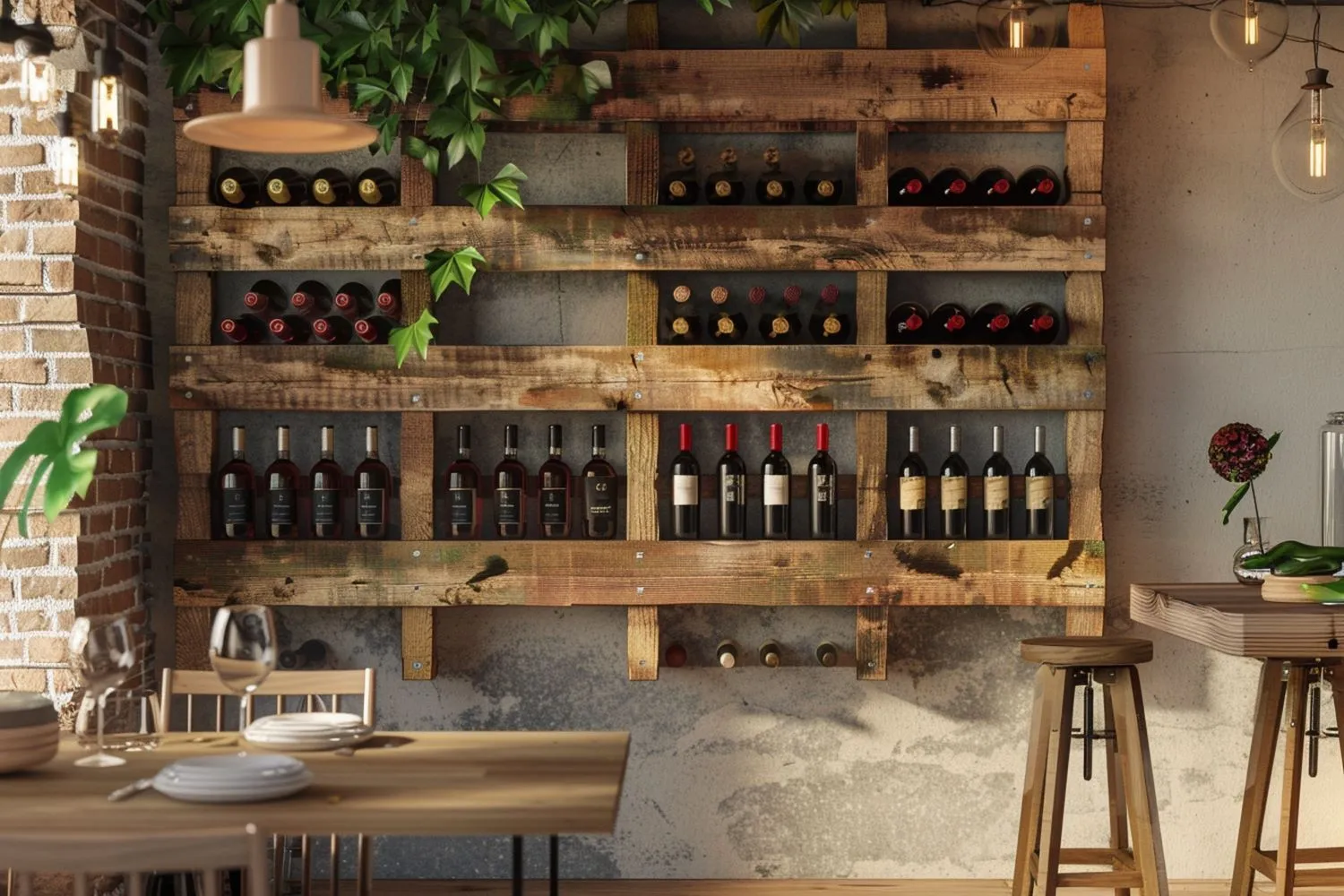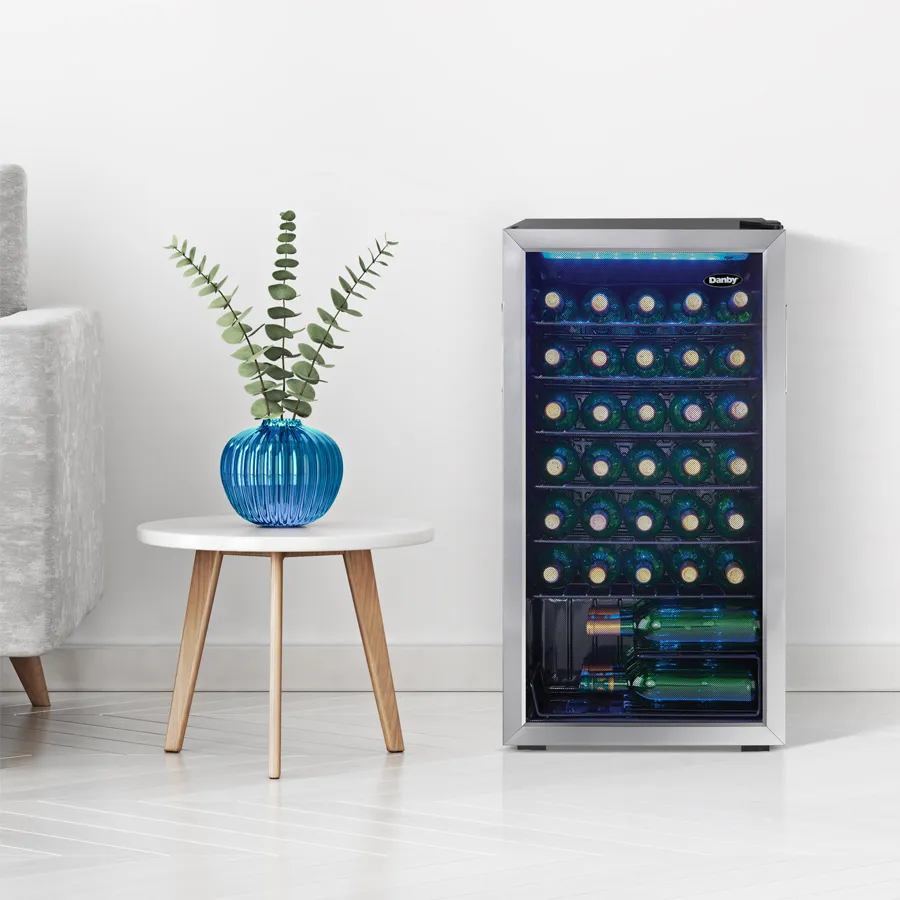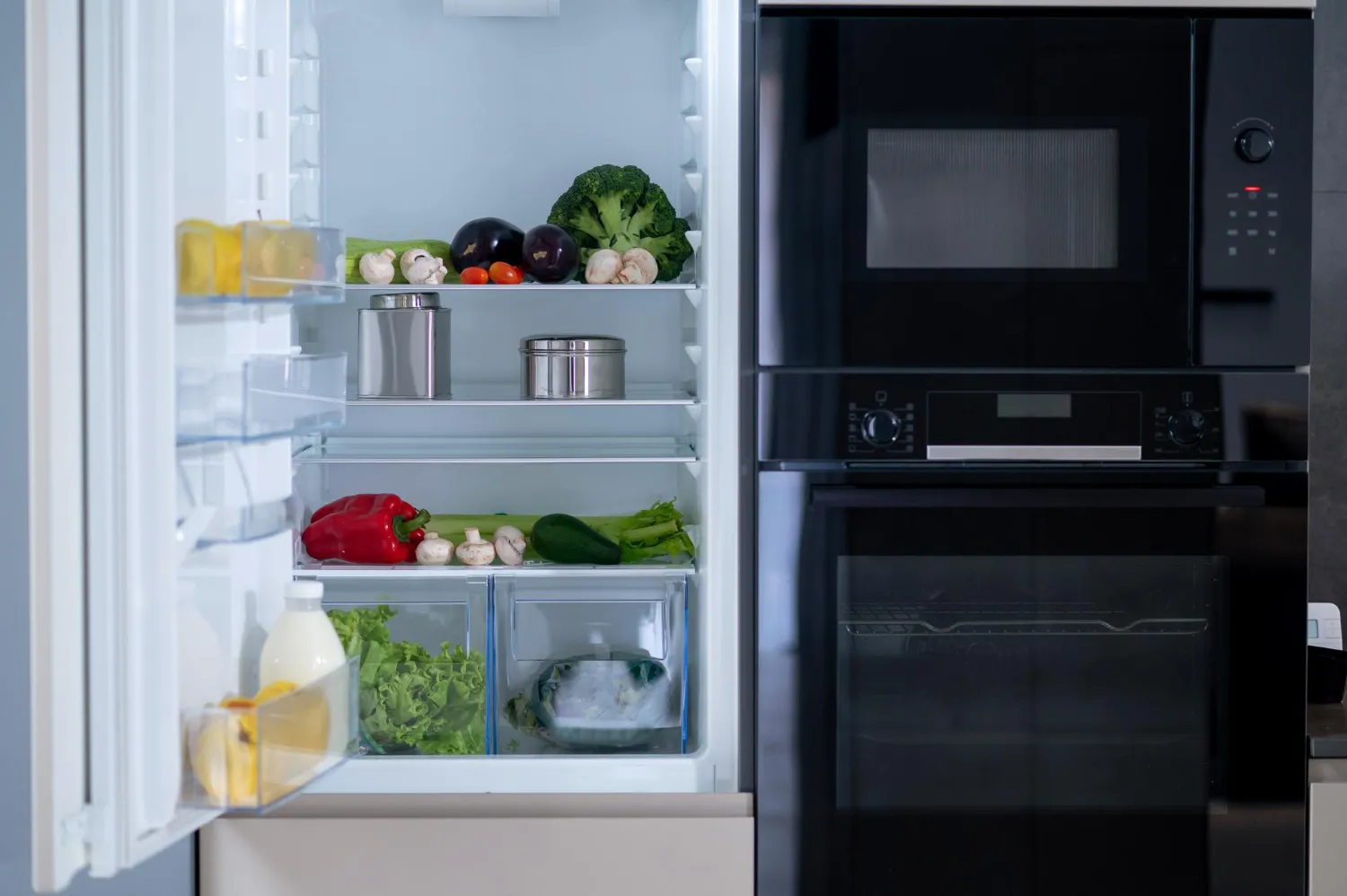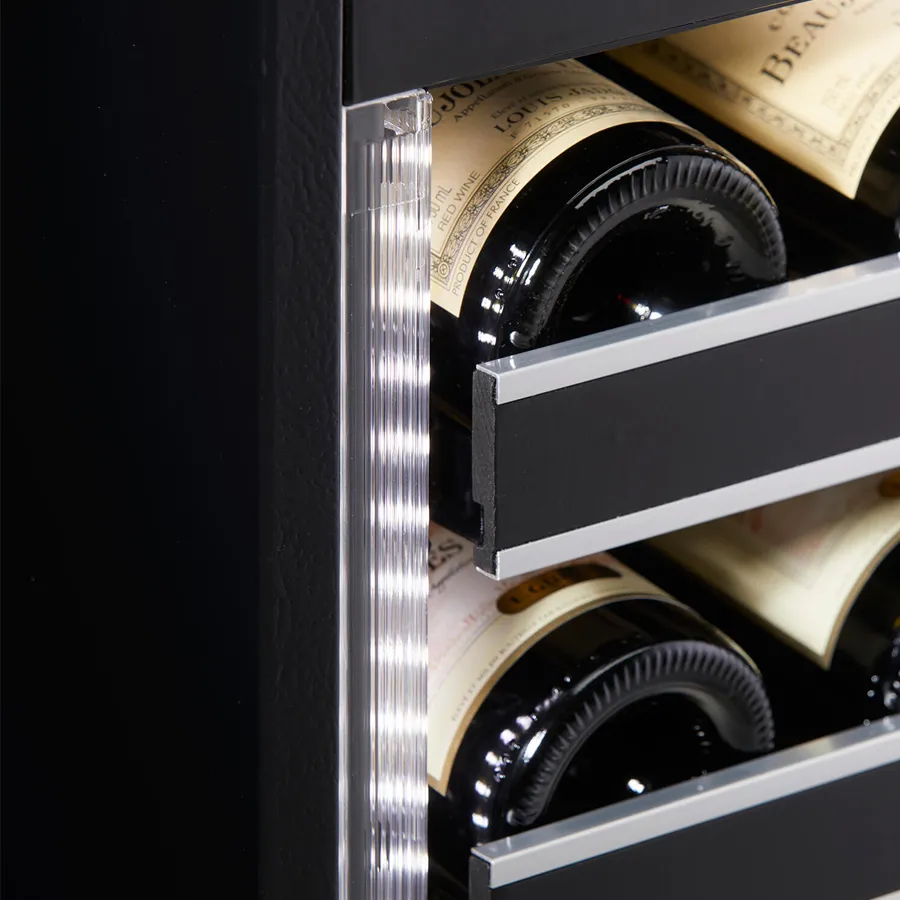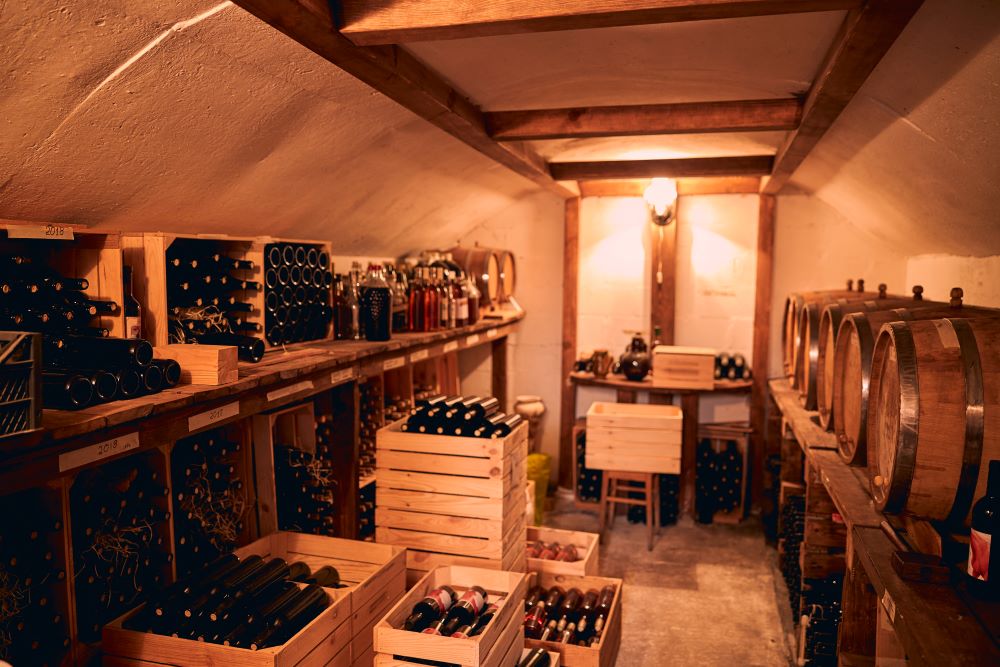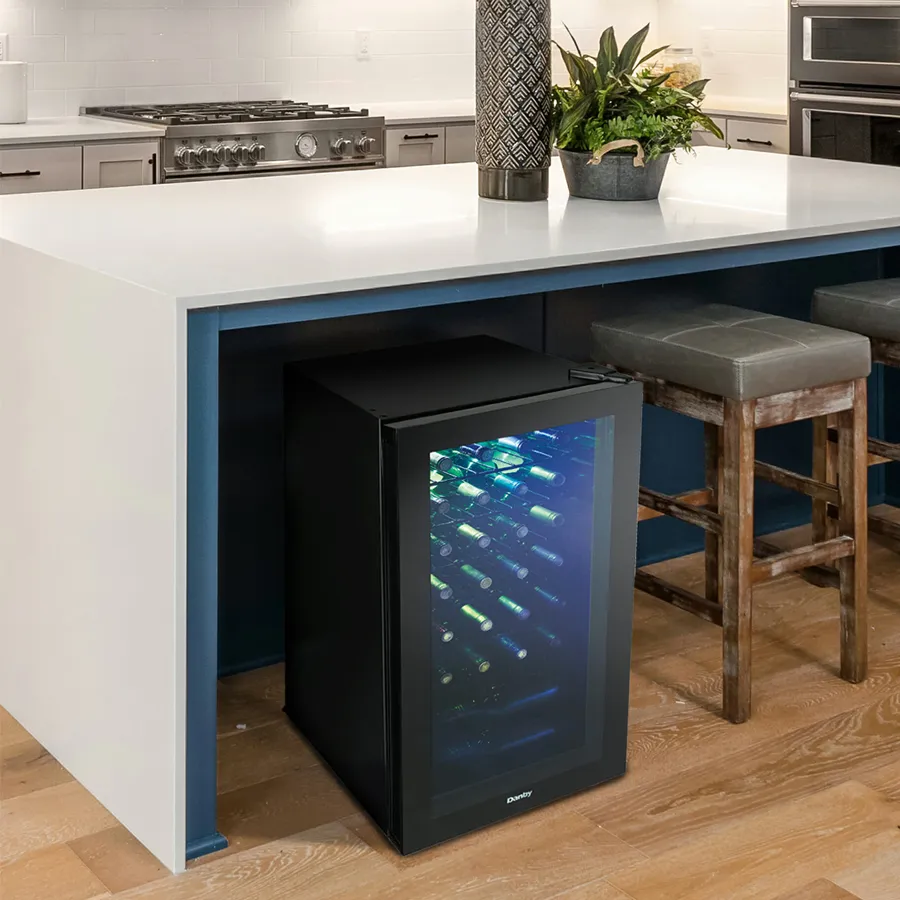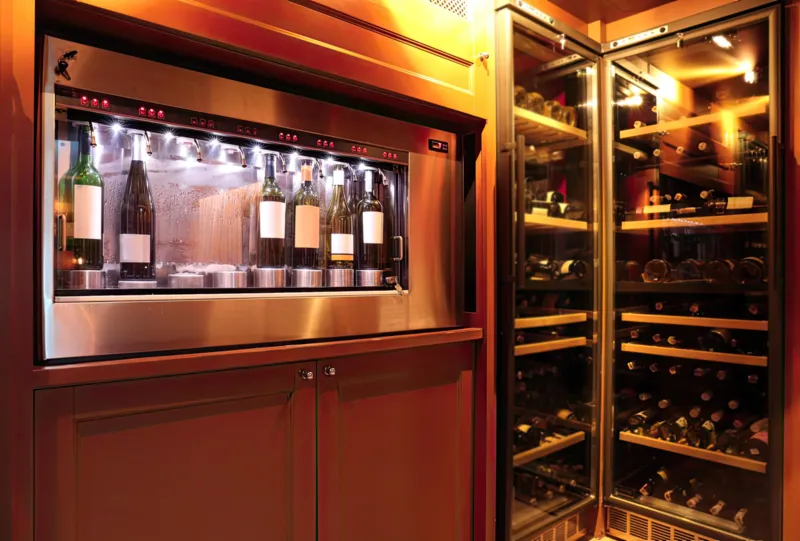Consider putting your freestanding wine cooler in a cabinet; wouldn’t it make more use of your space? There are a number of things to think about before committing to what might appear to be a handy alternative. Although it is theoretically feasible to install a freestanding wine cooler in a cabinet, one must be well-informed about the hazards and restrictions associated with this.
=> Quick Answer: Yes, it is possible, but it is not recommended to put a freestanding wine cooler in a cabinet.
About Freestanding Wine Coolers
Freestanding wine coolers are designed for standalone use and do not require installation within a cabinet. Most models come with adjustable shelving to accommodate different bottle sizes, and some even feature UV-resistant glass doors to protect your wine from light exposure. The flexibility and convenience of a freestanding wine cooler make it a popular choice for many wine enthusiasts. Additionally, the wide range of designs available allows you to find a wine cooler that complements your home decor.

A freestanding wine cooler is built to stand on its own, and it is not recommended to put a freestanding wine cooler in a cabinet.
Any Possibility of Cabinet Integration
You may be wondering if it’s possible to integrate a freestanding wine cooler into your cabinets. The short answer is yes, it is possible, but it does come with some considerations and potential challenges. In this chapter, we will explore the possibilities and limitations of integrating a wine cooler into your existing cabinetry.
Space Considerations
You need to consider integrating a freestanding wine cooler into your cabinets, Consideration of the available area is crucial. Most freestanding wine coolers are designed to stand alone, with proper ventilation on the sides and rear. Placing the cooler in a tight-fitting cabinet without proper ventilation can lead to overheating and potentially damage the unit. Additionally, you need to ensure that there is enough space for the door to swing open freely without any obstructions. For Freestanding units:
- Keep a 2-to 5-inch gap (depending on the type) between the unit’s rear and any nearby walls, and a 5-inch gap between the unit and the wall at the front.
- Never go into a wet or humid environment. Your unit will require defrosting more often due to the rapid formation of frost on the evaporator caused by excessive moisture.
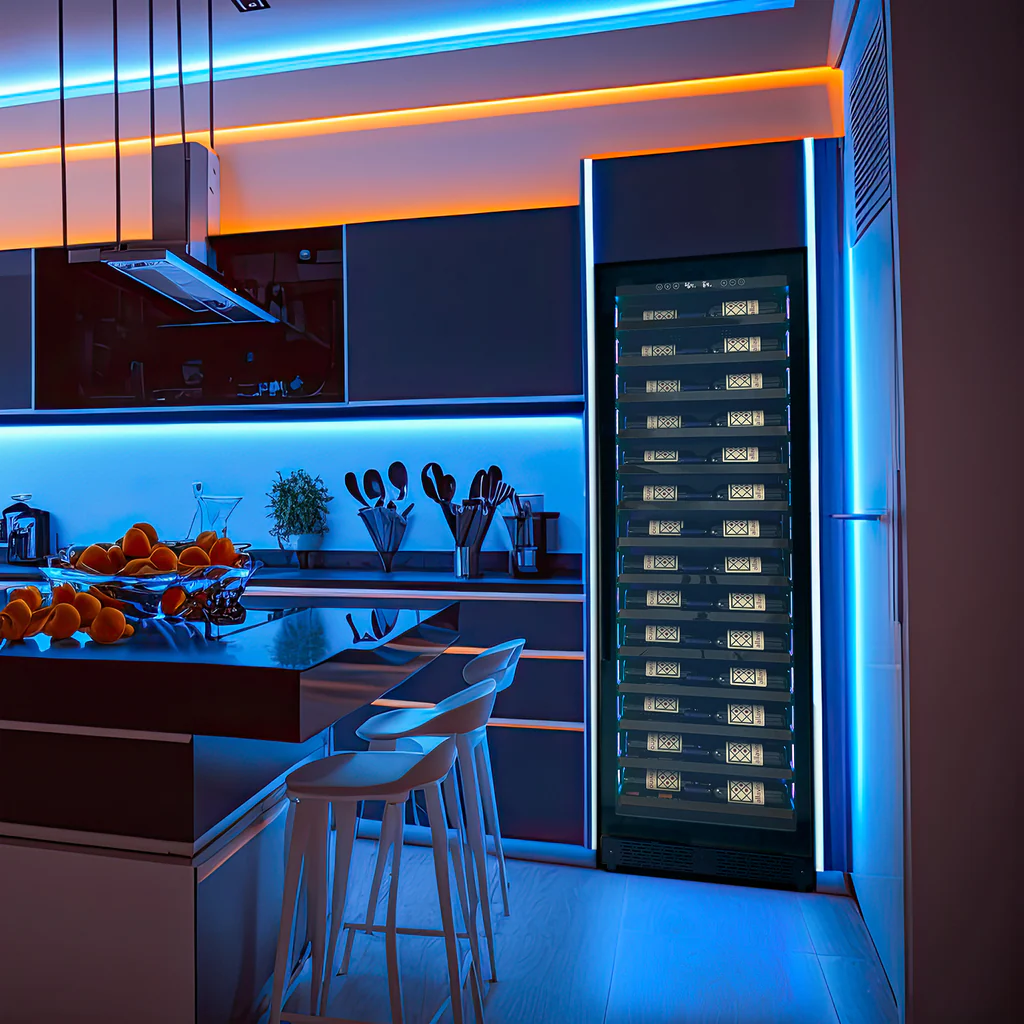
Overheating and possible damage to the unit can occur if the cooler is placed in a tightly fitting cabinet without enough airflow.
Modifying Cabinets for Your Wine Coolers
If you are set on integrating a wine cooler into your cabinets, you may need to modify the cabinetry to accommodate the cooler. This may involve removing shelves or cabinets to create a space that fits the dimensions of the cooler. Keep in mind that modifying your cabinets can be a complex and potentially costly endeavor, so it’s important to carefully consider this option before proceeding. Additionally, you may need to consider the impact on the resale value of your home if you make permanent modifications to your cabinetry.
Ensuring Adequate Airflow
Because Freestanding Wine coolers are designed for Standalone. That is why when installing a freestanding wine cooler in a cabinet, you need to ensure adequate airflow to prevent overheating and maintain the cooler’s efficiency. Make sure there is enough space around the cooler for air to circulate freely and avoid placing it in a confined space where airflow is restricted. Consider using a fan or venting system to improve airflow if necessary.
Conclusions: Can I Put a Freestanding Wine Cooler in a Cabinet?
Presently, it is not recommended to put a freestanding wine cooler in a cabinet. Freestanding wine coolers require proper ventilation to operate efficiently, and placing them in a confined space such as a cabinet can restrict airflow and lead to overheating. Instead, it is best to leave your freestanding wine cooler out in the open where it has plenty of room for ventilation and can maintain its optimal temperature. To keep your wine collection in pristine condition, put your wine cooler somewhere cool and dry, away from direct sunlight. If you follow these steps, your wines will stay properly iced for a long time.

